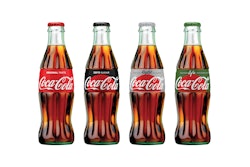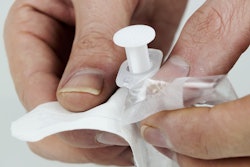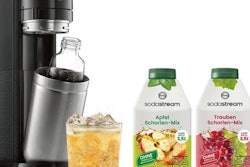The first large-scale use of aerosols was insect repellant used by U.S. soldiers fighting in the Pacific during WWII. These decades later, the core concept─a container, pressurized by a propellant, dispensing contents through a valve assembly─remains the same. However, a variety of innovations continue to be wrapped around that core. One way to discuss those innovations is to proceed from interior components to exterior components, but staying mindful of the systems interrelationships among components (for related reading, see: All about aerosols, Packaging Insights Newsletter, 04/07/16)
What qualifies as innovations? Beyond “newness,” there are subjective and comparative factors. That said, innovations should enhance benefits to the consumer, resulting in increased sales and profits.
Propellants
Ever since chlorofluorocarbons (CFCs) were banned in the 1980’s, the aerosol industry has had to use propellants that pass environmental muster. The list continues to grow beyond the familiar and now includes entries named alphanumerically and others sold under registered brand names. Choosing a single propellant from among many is daunting enough, made more so by the often-forced necessity of blending them. In addition to environmental concerns, product formulators can give structure to their decision-making with the right set of criteria.
Cost is always a criterion; however, it should be evaluated in terms of the ratio of propellant to product. The ratio not only affects the cost of propellant but also the size of the aerosol container (and thereby, its cost). Another criterion is the pressure that a propellant can be placed under and consequently exert during dispensing. The objective should be even flow and full evacuation of contents. Yet another criterion is compatibility/stability between propellant and product. For example, whether the product is water-based or solvent-based affects its ability to form an emulsion with a given propellant. One more criterion is toxicity, the existence of which eliminates a propellant from food and pharma use. And don’t forget about flammability; all other considerations being equal, non-flammability is preferred.
The merits of compressed air as a propellant are being touted by at least several suppliers, an interesting claim being the ability to dispense regardless of the position (i.e. upright, sideways, or upside-down) of the container. Whereas the environmental safety of compressed air is not an issue, its applicability should be determined using the aforementioned criteria.
Actuators and valves
Some marketers of aerosols are differentiating on the basis of the characteristics of the spray. An example is a currently-running television commercial for a major brand, emphasizing the wider angle of the spray; and, although that’s a benefit with certain products, a moment’s reflection will suggest products that benefit from a narrow spray. The point being made is that technology will continue to be applied to these aspects.
A different example in spray engineering is the dispensing of finer (smaller) particles, enabling, say, an air-freshener to hang in the air a tad longer. On a related note, a major marketer of spray deodorant has used finer spray technology to reduce the size of the container. The rationale goes: the finer spray lasts as long as its larger predecessor; a smaller container is suitable; source-reduction and smaller carbon footprint are claimed. Incidentally, the marketer, aware that consumers might perceive the smaller container as a backdoor price increase, explains the change with bold, conspicuous lettering.
Bag-on-valve
Having remote similarities with bag-in-box, a bag inside the aerosol container is filled with product. The propellant is injected into the aerosol container, occupying space not occupied by the filled bag. When the actuator is pressed, the pressure applied by the propellant squeezes the bag (which is connected to the valve assembly) causing dispensing.
The fact that the propellant never comes into direct contact with the product opens possibilities for food and pharma applications, but not at the elimination of others, such as a variety of viscous products. The plastic bag’s composition can be mono-resin, coextrusions, laminated, even metallized, depending on specified needs.
Steel cans
Since the beginning of the aerosol industry, cost, availability, and strength have justified the choice of (tinplated) steel, whether of 2-piece or 3-piece construction. Of late, however, steel cans have evolved from their traditionally cylindrical shapes and now can be had in a variety of contours. The potential for leveraging that versatility into shelf-impact is large, fueled further by advancements in lithography.
As for its sustainability beyond being recyclable, steel has to continue to make advances in lightweighting, while retaining the strength required of pressurized containers. Returning the discussion to shaped containers, a design challenge will be how to use tensile strength and other properties of steel to achieve lightweighting while maintaining uniform wall thicknesses.
Aluminum cans
Slugs (resembling really big coins) are impact-extruded (punch-pressed) into aluminum cans. Aluminum matches steel in recyclability, but it has an inherent advantage in terms of being lighter in weight. Aluminum holds an edge over steel in terms of versatility of shapes; however, in all instances, aluminum’s susceptibility to certain chemical interactions should be kept in mind and the proper interior coating chosen.
Compared to steel, aluminum imparts an upscale image, which not only has a visual component but also a tactile one. Those components are enhanced by the latest advancements in printing, to achieve arresting combinations of colors, tones, and shades. They are further enhanced by such finishes as brushed effects and embossing. Unsurprisingly, aluminum carries a price premium; however, it can be an acceptable tradeoff, depending on consumer targeting and product positioning.
Plastic cans
Plastic aerosols are made of PET, the same material used for soft drinks. Plastic aerosols are formed by injection-molding (to make the preform) and stretch blow-molding (to make the final shape), same as for soft drinks. Those commonalities aside, withstanding the pressure imposed by a propellant is a far more formidable assignment than withstanding the pressure imposed by carbonation.
Plastic aerosols are gaining use in European markets, but the U.S. penetration is advancing slowly. The main reason is the regulatory front; for example, in addition to the EPA, aerosols are regulated by an alphabet soup of agencies including DOT, FDA, FTC, and CPSC. Add to that the variety of fire codes that deal with the storage of plastics. Indeed, work remains in devising standards and test protocols for plastic aerosols. Heavily involved in that pursuit is the trade group, Consumer Specialty Products Association, through its Aerosol Division.
In the interim, companies are strategizing on the best ways to position plastic aerosols against aerosols of different compositions. In the final analysis, that’s what it comes down to: competition, which, in its own way, keeps aerosols under constant pressure.


























